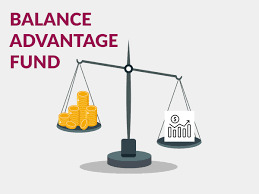
The period of the Covid-19 pandemic was marked by substantial uncertainty. At the onset of the lockdown, the future appeared highly unpredictable, and a continuous stream of negative news fueled our concerns. Undoubtedly, many of us experienced moments of anxiety during this period.
As circumstances gradually stabilized, there was a collective yearning for social interaction, a strong desire to indulge in vacations, and a return to the workforce. Over time, the concept of remote work or a hybrid work model gained popularity. Some colleagues found value in the flexibility offered by such hybrid arrangements.
Now, you might wonder, what does all this have to do with investing? Well, the rise of the hybrid work model highlights the advantages of flexibility in our lives. It affords us more time to pursue our passions and to spend quality moments with our families.
So, where do Hybrid Funds come into play? These funds invest in a combination of both equity and debt. Within the Hybrid Funds category, there exists a subset known as Balanced Advantage Funds. Balanced Advantage Funds adjust their asset allocation between equity and fixed income based on a predefined formula. For example, if market valuations appear stretched, the fund’s model will reduce its equity exposure. Conversely, if market valuations seem attractive based on long-term averages, the model will increase equity exposure.
In essence, Balanced Advantage Funds counteract the typical human tendency to enter the market when equities are expensive and exit when they are discounted. These funds strive to achieve this automatically. They assess market levels and compare them to historical averages based on specific factors they track. Subsequently, they make necessary adjustments to the fund’s equity and fixed-income allocations without requiring your intervention.
Do you remember the old advertisement for a popular bike with the slogan – “Fill it, shut it, forget it”? Balanced Advantage Funds offer a similar level of convenience for investors.
If you’re not inclined to delve into the intricacies of equity and fixed-income investing, including concepts such as interest rate trajectories, inflation, valuations, and macroeconomic factors, you may opt for Balanced Advantage Funds. Hybrid Funds grant you the freedom to diversify across equity and fixed income, with the asset allocation decisions handled by the fund manager.
Indian investors are increasingly recognizing the benefits of Balanced Advantage Funds, leading to a growing interest in this category. These funds currently boast:
- The 7th position in terms of Net Assets Under Management (AUM) with Rs 2.09 lakh crore.
- The 15th position in terms of the number of folios, with 43.20 lakh folios.
- The 4th position in terms of net inflows in August, with Rs 3,616 crore.
![]()




